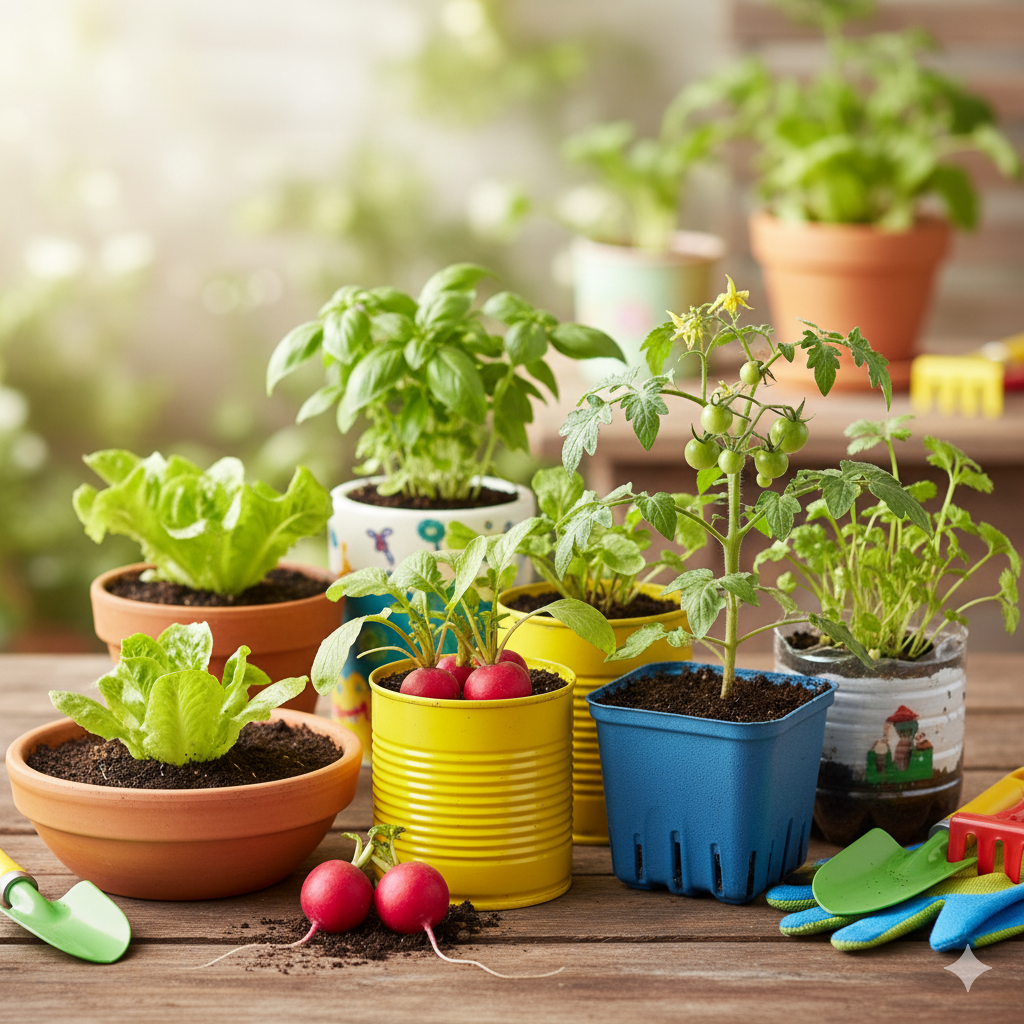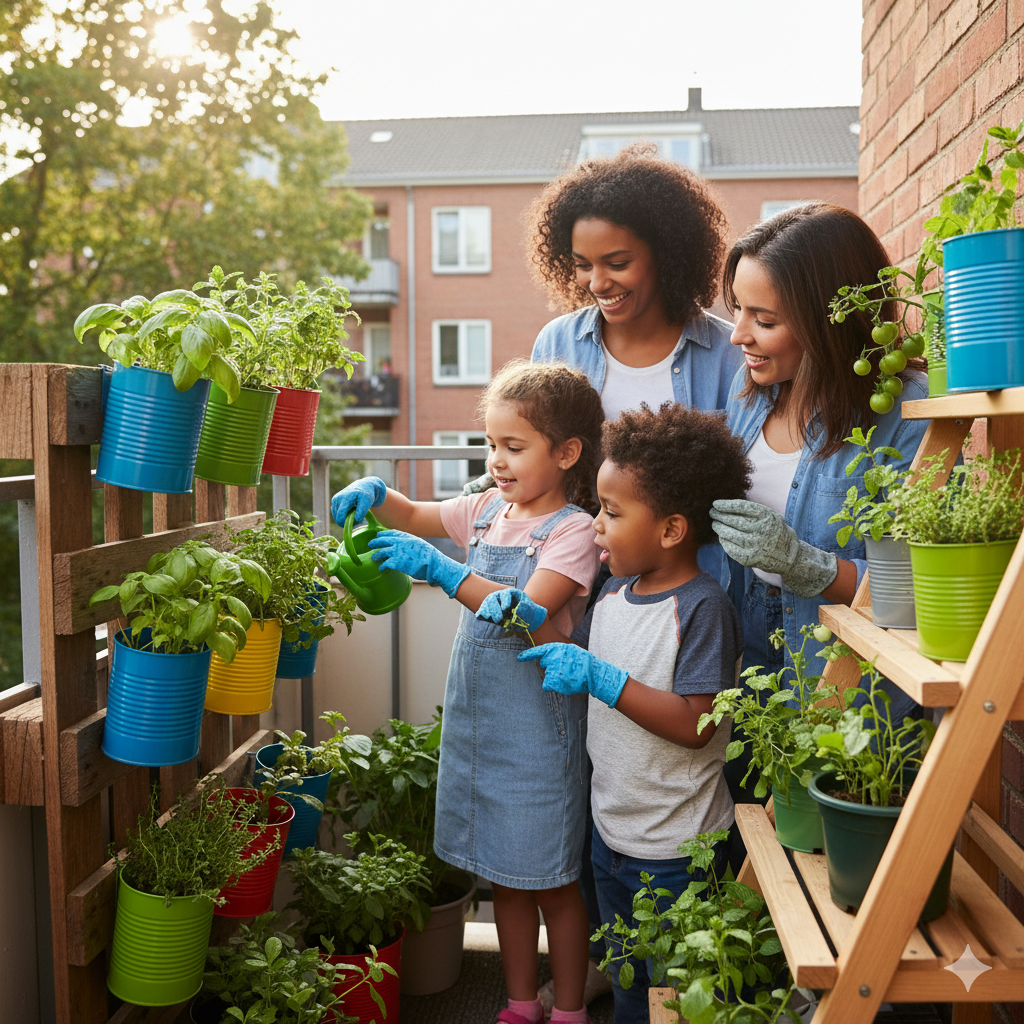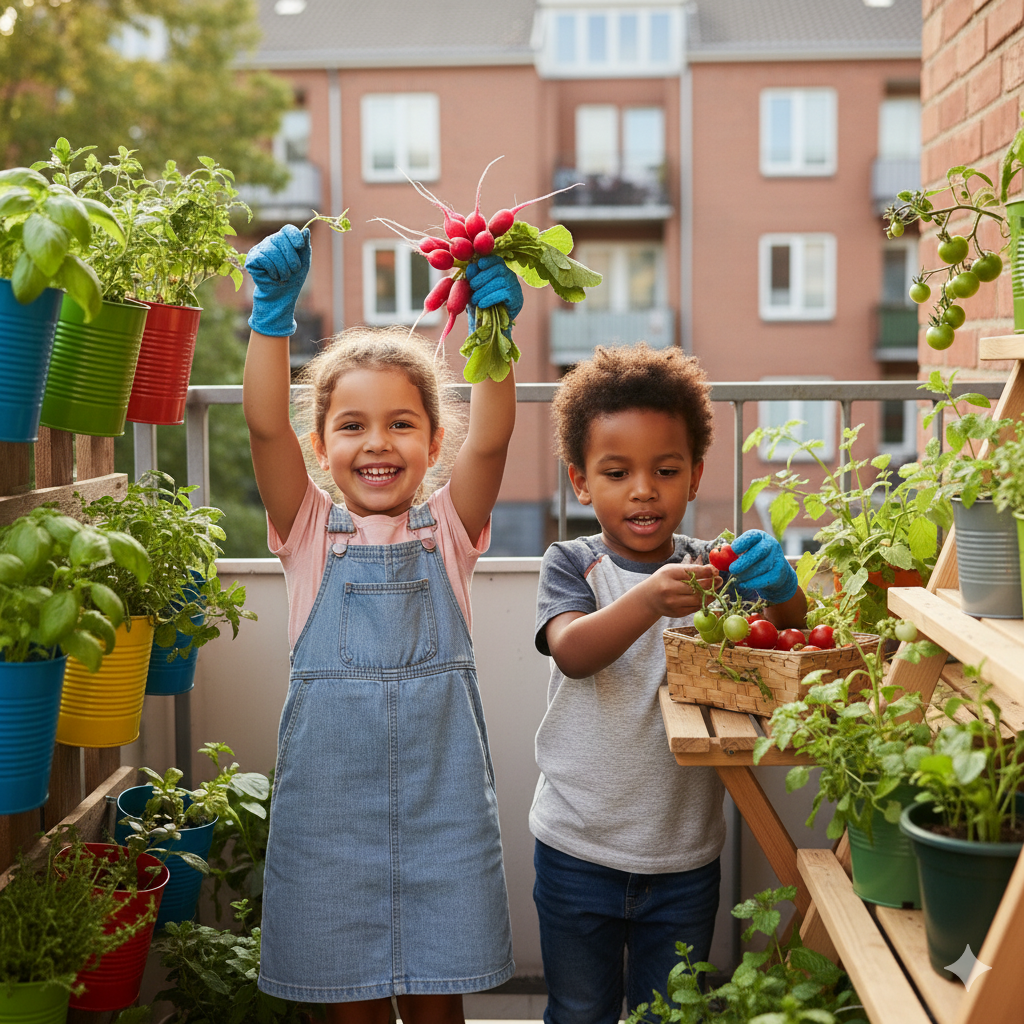Small Spaces Small Footprint
Got a tiny balcony? A sunny windowsill? A small patch of yard? Don’t let a lack of space stop your family from getting your hands dirty and growing something amazing! Gardening is a fantastic way to teach kids about where food comes from, get them excited about healthy eating, and spend quality time together.
Here’s a guide to turning even the smallest corner of your home into a thriving family garden.
Step 1: Get Creative with Your Space
Small-space gardening is all about thinking outside the box—or in this case, the pot!1
- Go Vertical: If you don’t have a lot of floor space, go up! You can use a hanging shoe organizer, a tiered planter stand, or even attach pots to a wooden pallet to create a beautiful and space-saving vertical garden.2 This is great for climbing plants like peas or beans.
- The Container Crew: Pots, planters, and even recycled materials are your best friends. Almost anything can be a planter if it has drainage holes at the bottom. Think old watering cans, plastic bottles cut in half, or painted tin cans. Let the kids decorate them for a fun, personalized touch!
- Window Wonders: A sunny windowsill is the perfect home for a mini herb garden.3 Basil, mint, parsley, and chives are all easy to grow indoors and can be snipped off to add to your family meals.
Step 2: Pick Your Green Team (Easy-to-Grow Plants!)

You want to start with plants that are hardy and forgiving, especially when little hands are involved. These “superstar” plants will give your family a quick and rewarding taste of success.
- Cherry Tomatoes: They grow beautifully in pots, and kids love watching the little green globes turn bright red.4 They’re also perfect for snacking right off the vine!
- Radishes: They grow super fast!5 Kids can plant the seeds and be harvesting in as little as 3-4 weeks. It’s like magic!
- Lettuce and Spinach: You can grow these leafy greens in shallow containers, and they don’t need a ton of sun.6 Plus, you can harvest the outer leaves as you need them, so the plant keeps producing.
- Herbs: Mint, basil, and cilantro are all easy to grow and add amazing flavor to your food.7 Bonus: Mint is almost impossible to kill, making it a great starter plant.
- Snap Peas: These love to climb! Plant them at the base of your vertical garden and watch them reach for the sky. The sweet pods are a fun reward for all their hard work.
Step 3: Make it a Family Project

Gardening with kids isn’t just about the final harvest; it’s about the process! Here’s how to make it fun for everyone:
- Design a Plan: Let the kids help decide what to plant and where. Give them a special trowel and gloves just for them.
- Planting Day is Party Day: Put on some music, set up your pots, and get everyone involved. Let the kids get their hands dirty. It’s a sensory experience that’s great for learning.
- Give Them a Job: Assign each child a plant or a task, like “the official waterer” or “the plant whisperer” who checks on the garden every day. This gives them a sense of ownership and responsibility.
- Document the Growth: Take daily photos of your garden. This is especially fun for fast-growing plants like radishes or beans. You can even create a little “garden journal” together to draw the progress.
- Celebrate the Harvest: When it’s time to pick your first tomato or radish, make a big deal out of it! Let them wash the veggies and add them to the family salad or pasta dish. There’s nothing like eating something you grew yourself!
Don’t worry about being a perfect gardener—the goal is to have fun and learn together. Even if a plant doesn’t make it, it’s a valuable lesson in patience and resilience. Happy planting!


Leave a Reply